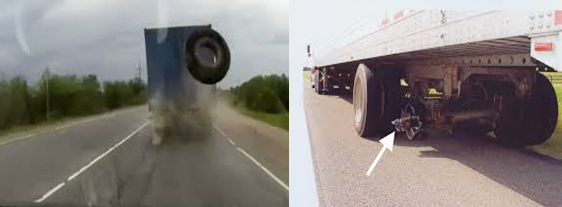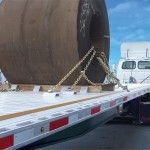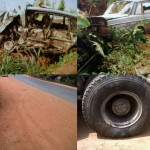
While in other climes, the issue of wheel separation seems to have been roundly addressed and reduced to the barest minimum, in our geographical space, that surely may not be our testimony. Rough estimates suggest that unplanned separations still occur at a rate of probably several per day. Exact numbers are hard to determine because most incidents go unreported.
A lost wheel may not be discovered immediately by the vehicle operator and then when it is, it is fixed, providing no record for enforcement or research efforts. Also, even when a wheel is involved in a crash – whether with another vehicle or with pedestrians or property – the driver may not know it has happened and tracking the vehicle down could be a challenging forensic exercise.
Driving along Lagos-Ibadan sometime during the yuletide for instance, we encountered not less than 15 cases of wheel separations being addressed by the drivers involved right there on the road. We can wager with a reasonable degree of certainty that not one of these will be reported when the drivers get back to their station.
Space would not permit us to consider an in-depth look at solutions to wheel separations, including tips on bearing installation and wheel fastener tightening and installation procedures. However, in this article we will take a deep-dive into the issue of wheel separations, including some very good background on the problem and some innovative research into its causes.
Developments in wheel separation
Researches in places like United States revealed that separation incidents were about even between tractor and trailer, with trailers representing a little fraction more incidents than trucks. Using our brief experience during the trip mentioned earlier of the 15 incidents that we took count of, 9 occurred in trailers.
Fastener-related separation accounted for 50% of the recorded incidents while bearing related failures accounted for about 30%. In essence, we opined that Drivers should be trained to inspect their wheels on a regular basis even during trips. Early detection can prevent a loose wheel from becoming a separation statistics
While failures of the wheel itself or the axle spindle resulting in separations is another possibility albeit very rarely, we can aver that we did not encounter any during this rough survey.
Further to discussions with the victims of the separation involving wheel fasteners, we learnt that the suspect wheel had recently been repaired. This for us turns out to be a critical observation.
In our study of the incidents of wheel separation across various geographical divide, we discovered that the observation stated above was one of the underlying reasons for the recommendation and adoption of training and certification program for workers who remove or replace wheels on trucks, trailers and motor coaches in the city of Ontario in United States. Till date, it is an offense in that province for a non-certified technician to install a wheel, and there is a sign-off procedure to document who did the work. Part of the training program recommended for the certification of workers who replace wheel, covers among many other things, proper wheel-nut torqueing procedures, which had been discovered to be hitherto lacking in the province. Proper procedures include removing all rust and debris from mating surfaces, proper inspection of the fastening hardware and proper fastening, which means at the very least using a calibrated torque wrench rather than an impact wrench to tighten the lug nuts.
This is based on further findings that in many wheel-separations, wheel nuts had worked lose due to lost clamping force attributed to material lodged between the wheel discs breaking free and/or fasteners damaged by over-torqueing. This policy has tremendously led to a significant drop in the number of reported separations since the training, certification and sign-off programs took effect. No longer in Ontario, can just anyone grabbing an impact wrench go to town on a truck wheel.
While replicating same and getting it to become a wholistically adopted regulatory requirements for haulage operations in Nigeria could easily compare with tasking the camel to walk through the eye of the needle, it would go a long way if each private haulage company can imbibe the tested and certified remedies that have been so far cited in this write-up with each incorporating same into their standard operating procedures. Commonly used in Nigeria is impact wrench as we have discovered from various visits to operation yards of a number of haulage companies and auto-mechanic workshops. Why most have not embraced the use of torque wrench is what we cannot rationalize in this article. Though it would not make economic sense to equip each driver with a torque wrench, having one at least at the workshop level and designating an answerable officer with proper training for its handling would surely go a long way in helping each company minimize frequency of wheel separation.






